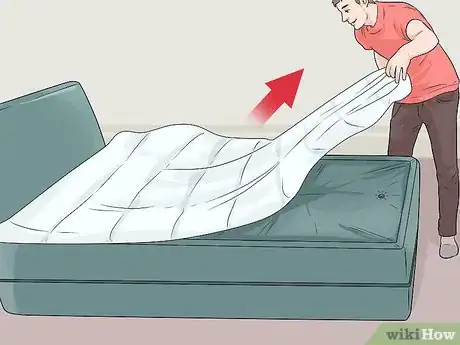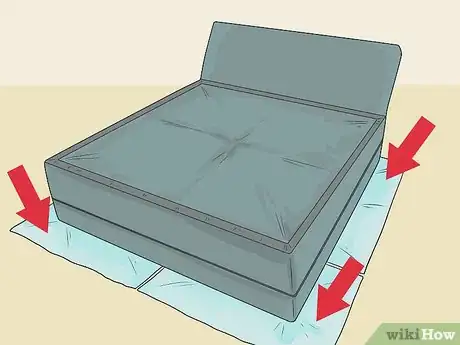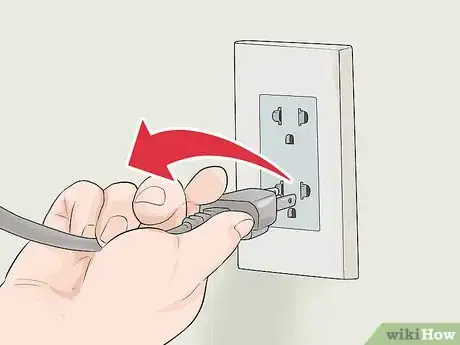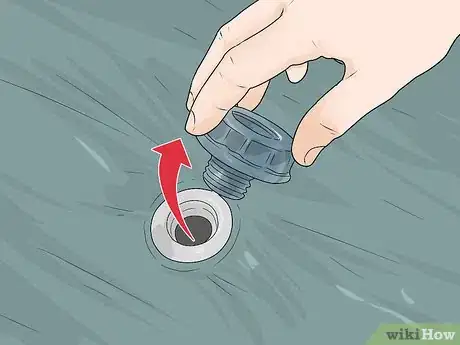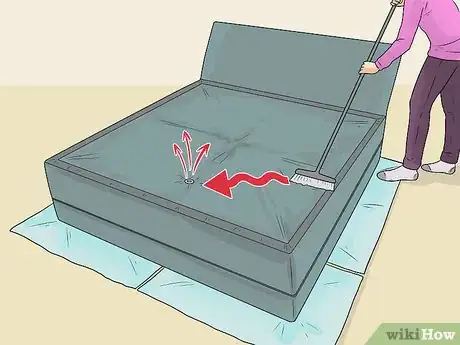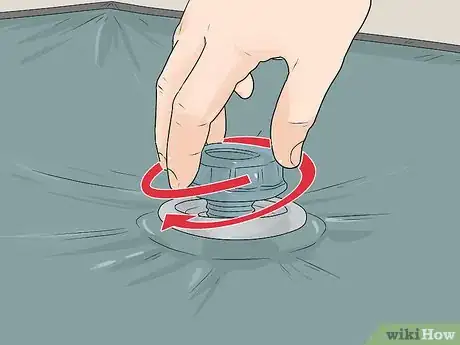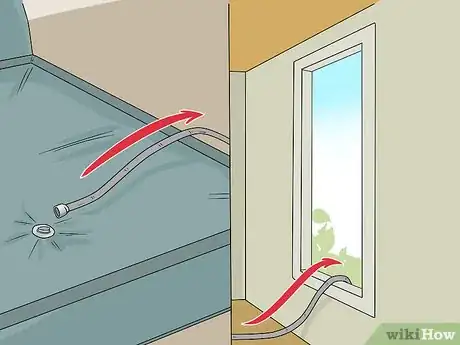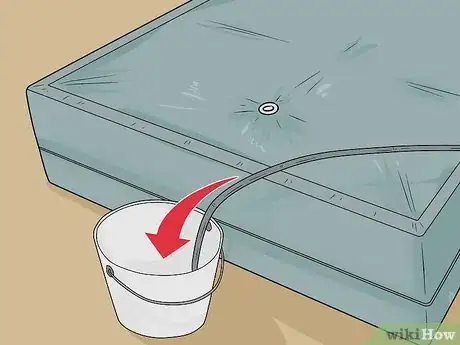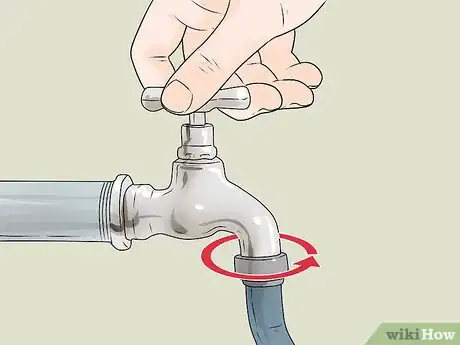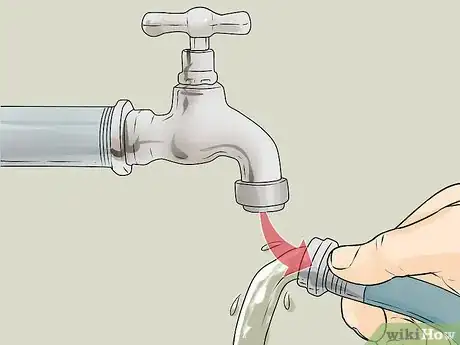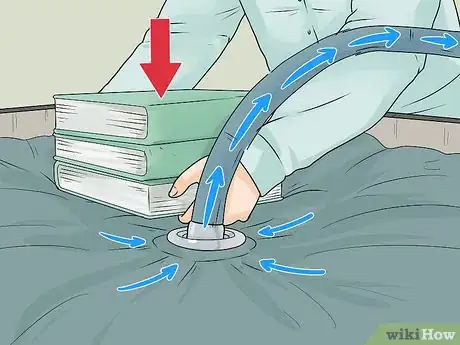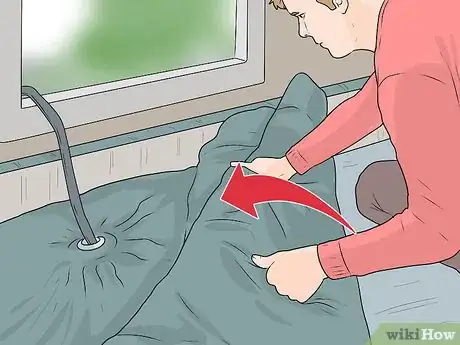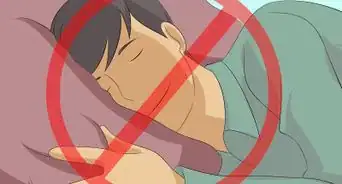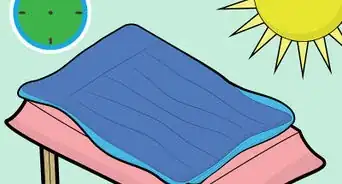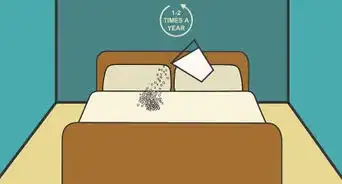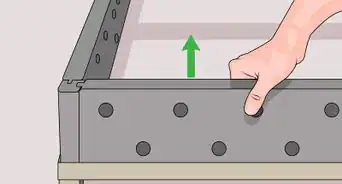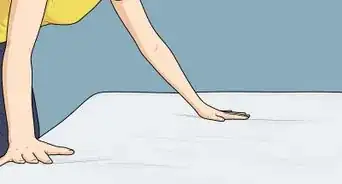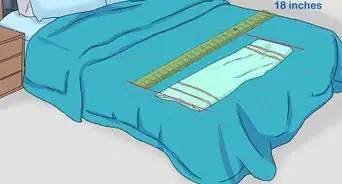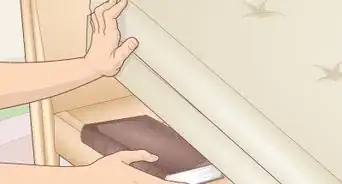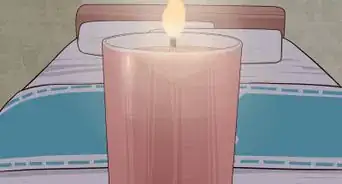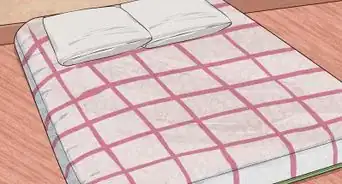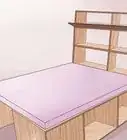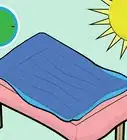This article was co-authored by wikiHow Staff. Our trained team of editors and researchers validate articles for accuracy and comprehensiveness. wikiHow's Content Management Team carefully monitors the work from our editorial staff to ensure that each article is backed by trusted research and meets our high quality standards.
wikiHow marks an article as reader-approved once it receives enough positive feedback. In this case, 88% of readers who voted found the article helpful, earning it our reader-approved status.
This article has been viewed 102,156 times.
Learn more...
While sleeping on a waterbed is a lot of fun, the prospect of emptying one is not. Emptying a waterbed does indeed take a lot of time and preparation. However, this could be a lot easier and less stressful than you think. By thinking the process through and doing it properly, you’ll be prepared to make emptying a water bed a seamless experience.
Steps
Preparing to Drain the Mattress
-
1Strip your bed. Start by removing all bedding from the waterbed. This includes removing mattress pads, sheets, comforters, pillows, and everything else. Ultimately, you won’t be able to drain the bed without stripping it.
-
2Place towels at the foot of your bed. After stripping your bed, take a few towels and place them around the waterbed. You may also want to position a few around the ends of the waterbed mattress so they can catch any water that spills.
- Keep extra towels around in case you have a spill larger than you anticipated.
Advertisement -
3Unplug the waterbed. Go behind the bed and unplug the waterbed heater and any other plugs that might power some aspect of the bed. Without unplugging the waterbed, you could damage it or put yourself in danger.
-
4Find the fill-and-drain valve. The fill-and-drain valve is the valve you use to fill or empty your waterbed. This valve is very often located toward the foot of the bed. It may be in the center, or it may be toward one side. After you find the valve, remove the cap from it.
-
5Empty extra air from the mattress. Push out as much air as you can from the mattress. Take a light broom and sweep from the top end of the mattress toward the valve. Remove as much air as you can, as air will slow down and complicate draining the bed.
-
6Place the cap back on the valve. By placing the cap back on the valve, you’ll stop air from getting back into the mattress. Make sure you tighten the cap so water doesn’t get out, either.
Running a Hose Outside
-
1Run a garden hose from the waterbed out of a nearby window. Take the garden hose and place the spigot head out of a window near a spigot on the side of your home. Take the other end and lay it near the fill-and-drain valve of the waterbed.[1]
- The draining end of the hose should be lower than the waterbed. If it is not, the bed will not drain.
- You can choose to empty your waterbed into a sink or a tub, instead of outside. However, if you choose to use this method, make sure that the sink or tub drain quickly and properly. If not, you could wind up flooding your home.
-
2Place a bucket under the inside end of the hose. Put your bucket next to your waterbed and place the end of the hose inside the bucket. The bucket will catch any water that comes out of the hose before you begin the draining process.[2]
-
3Attach the garden hose to the outside spigot and turn on the hose. Allow the hose to run until a steady stream of water spills out into the bucket next to the bed. Running water through the hose will eliminate any remaining air from the hose. This will aid in the draining process.
- You might need a second person to be waiting outside by the spigot.
- Leave the hose connected to the spigot.[3]
-
4Connect the hose, waterbed hose adapter, and the waterbed valve. Take the cap off the waterbed and attach the waterbed hose adapter to the waterbed. Then, connect the hose to the adapter. Make sure all three parts are tight so that no water can leak out.[4]
Draining the Waterbed
-
1Disconnect the hose from the spigot. Once you disconnect the hose from the spigot, water will begin to flow out of the waterbed, into the hose, and onto the ground outside your home.
- You can also drain the water into a sink or a tub.
-
2Attach a siphon pump, if you have one. If you want to use a siphon pump to speed up the process of draining the bed, you need to hook it up it up to the end of the hose that is outside. This should be done immediately after you disconnect the hose from the spigot. After you connect the pump, quickly power it on.
-
3Place heavy objects around the valve. By placing heavy objects, like books, around the valve, you’ll depress the valve and lower it in comparison to the rest of the waterbed. This will aid in draining the bed.
-
4Roll the mattress toward the valve. As the mattress empties, you will need to start rolling the mattress from the head of the bed toward the valve. Do so slowly and methodically. Make sure you force water out of the part of the mattress that you are rolling.
- The mattress will probably need to be about 75% empty before you start rolling it.
- Be careful as to not put too much pressure on the valve.
-
5Carry the mattress outside and empty it completely. After you’ve emptied the clear majority of the mattress – over 90% -- you may need to carry it outside to help drain more. When you do this, place the mattress on a soft, non-abrasive surface, upside down. Hold the end opposite the valve up and shake any remaining water out of the mattress.
Community Q&A
-
QuestionHow long should it take to empty water bed?
 Community AnswerI've owned a waterbed for over 40 years and have changed several mattresses. I'm in the process of emptying a baffled mattress this weekend. I did not use a siphon pump and it took probably 10 hours to siphon. The baffles hold a lot of water, so on the second day, I used a wet vacuum to suck out water a bucket at a time. The mattress is quite heavy. As I empty it, I pushed items under the side of it to keep the water moving toward the valve.
Community AnswerI've owned a waterbed for over 40 years and have changed several mattresses. I'm in the process of emptying a baffled mattress this weekend. I did not use a siphon pump and it took probably 10 hours to siphon. The baffles hold a lot of water, so on the second day, I used a wet vacuum to suck out water a bucket at a time. The mattress is quite heavy. As I empty it, I pushed items under the side of it to keep the water moving toward the valve.
Warnings
- Always disconnect any electrical connections to your bed to avoid the obvious shock and/or electrocution hazards when working with electricity and water. In addition, unplug any electrical devices in the immediate area of the waterbed.⧼thumbs_response⧽
Things You'll Need
- Garden hose
- Hose connector
- Outside spigot or faucet
- Siphon pump (optional)
- Towels
- Bucket
References
About This Article
Before you empty a waterbed, remove all the bedding and place towels around the bed to catch any water that spills. Next, unplug the bed, remove the fill-and-drain valve cap, and use a broom to push out as much air as you can from the mattress. Afterwards, replace the valve cap, then connect one end of a garden hose to the bed using the waterbed hose adapter, and connect the other end to a spigot outside the window. Then, disconnect the hose from the spigot so the water from the bed drains into the hose and onto the ground outside. To learn more, including how to empty your waterbed into a sink or tub, scroll down!
